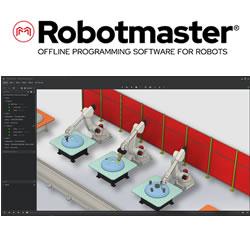By having robots perform the job of human hands, the process of getting a new drug to market is significantly improved. Having a robot do the work can ensure accuracy and repeatability across multiple trials
Automation Advancing the Pharmaceutical Industry
Piero Zucchelli | Andrew Alliance
What are the key industry drivers towards more automation in laboratory environments?
Companies are struggling to succeed in guaranteeing that experiments are being executed with pinpoint precision every single time. To resolve this issue, they are looking to automation for the assurance of increased accuracy and repeatability. By eliminating the risk of human error, lab automation provides the reproducibility that researchers strive for, and can thus speed up the time to market.
In the pharmaceutical industry, we are seeing advancements in precision medicine and drug discovery, but for this trend to continue additional laboratory automation is a must.
What can organizations expect to gain by increasing the level of automation in their labs?
In short, repeatability and precision. That is what companies will gain most from using automation tools within the labs. With automation tools, researchers can spend their time focusing on other tasks, such as more time spent in the research and development of new drugs while time consuming and tedious tasks are automated. Automation tools are no longer simply “nice to have”. Rather, they are critical to the future of drug development and pharmaceutical research.
How will robots impact the lives of scientists working in laboratory environments?
Having automated tools that can do the time-consuming work for researchers, they can now spend time on discovering and analyzing data to advance the future of medicine and science. Lab automation tools, such as Andrew, not only further the innovation of drug discovery, but also aid in the study of DNA sequencing, proteomics and cell biology. By having tools that yield such accurate results, researchers save time and reduce errors.
Are there any drawbacks to implementing more automation into laboratories?
One misconception with many lab automation tools is that they are too complicated to use. This is not at all the case with Andrew. Andrew was designed for scientists and researchers as an easy to use tool. Andrew doesn’t require any special training to operate its parts. With the tool being relatively simple to learn and by providing researchers with top notch precision capabilities, Andrew provides users with incomparable benefits.
Can you ever envision a scenario where robots completely replace scientists in laboratories? Why or why not?
Technology is advancing faster than ever and new tools are certainly shaping the way people perform their jobs, but I do not foresee that robots will completely replace scientists. The human brain is essential in furthering new ideas and concepts. Automation will simply allow scientists and researchers to perform their jobs better, with increased accuracy and precision, freeing up time for other more valuable tasks.
How do you see the role of automation evolving in pharmaceutical environments over the next five years?
I see automation shifting the way people perform their jobs. As technology continues to rapidly evolve and expand, researchers and scientists will find new outlets and ways to discover trends and breakthrough nuances. More and more companies will begin to implement automated tools into their daily lives, providing more advanced technology and a growing competitive atmosphere in finding the next best medical cure.
Can you explain how current processes for drug development are executed and how this can result in inconsistent testing results?
The FDA has a five-step process that all pharmaceutical drugs must go through to be certified for public consumption. At the beginning stages of discovery and development, researchers gain new insights into the disease they are looking to focus on and what chemicals would be best to target. They then move to the preclinical research phase to test the toxicity of the drug to ensure its safety prior to human consumption. Subpar preclinical data is one of the largest contributors to clinical test failures. The lack of reproducibility in this stage of the development process is making way for more variability and uncertainty in the data produced, which ultimately means it can’t be trusted. When preclinical data has been unproven through reproducibility, it can be flawed.
Although the data is flawed due to a lack of reproducibility, drugs can make their way into scientific literature and thus be used as the basis for clinical trials. During this phase, it will eventually become clear that the preliminary test data was inaccurate, and the entire process will need to be scrapped. This can cost drug developers up to $1.4 billion depending on what phase the flaws are identified.
What specifically in the drug development process can automation positively impact or change?
Two words: time and money. By having robots perform the job of human hands, the process of getting a new drug to market is significantly improved. Having a robot do the work can ensure accuracy and repeatability across multiple trials, which ultimately saves the researcher in additional expenditures.
 About Piero Zucchelli
About Piero Zucchelli
Piero Zucchelli is CEO of Andrew Alliance, the robotics company that is improving repeatability with an innovative approach to liquid handling, using conventional lab pipettes. As a scientist, he spent 15 years in experimental particle physics and later developed one of the most advanced micro-fluidics platforms. He received his M.Sc. and Ph.D. in Physics for work performed in Stanford University and CERN. He co-founded Andrew Alliance to improve the progress of biology, under the belief that better laboratory operations will produce better data, and better data will deliver better science.
The content & opinions in this article are the author’s and do not necessarily represent the views of RoboticsTomorrow
Comments (0)
This post does not have any comments. Be the first to leave a comment below.
Featured Product

